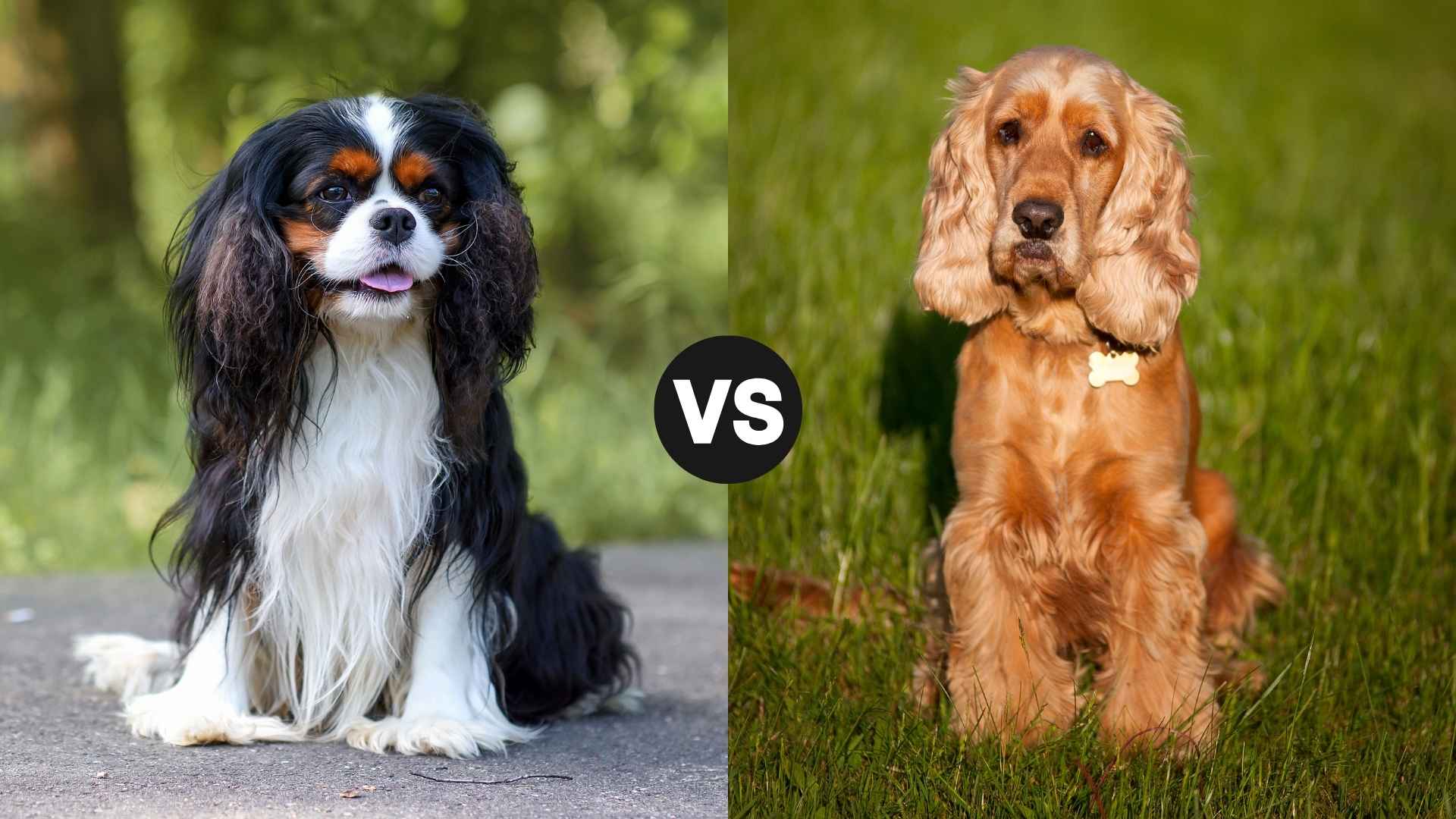When choosing between two beloved dog breeds like the Cavalier King Charles Spaniel and the Cocker Spaniel, it helps to look at more than just appearance. One fascinating stat shows how preferences are shifting: according to the American Kennel Club (AKC), the Cavalier King Charles Spaniel ranked as the 13th most popular breed in 2024, while the Cocker Spaniel didn’t crack the top 20.
Popularity doesn’t automatically mean a better fit. While King Charles Spaniels are often prized as gentle, affectionate dogs who love spending time snuggled next to their owners, Cocker Spaniels, especially the American Cocker, shine with their cheerful energy and love for exercise and mental stimulation.
But despite their similar looks, they differ quite a bit in terms of grooming needs, energy, and day-to-day compatibility with families, children, and even other dogs.
Cavalier King Charles vs. Cocker Spaniel
Here are the main differences:
Size Comparison: Cocker Spaniel vs. Cavalier King Charles Spaniel
When comparing the Cocker Spaniel and the Cavalier King Charles Spaniel, one of the first differences is their size, and that can matter more than you’d think, especially for pet parents looking to match a dog breed with their living space and lifestyle.
According to WebMD, the Cavalier King Charles Spaniel typically stands about 12 to 13 inches tall and weighs between 13 to 18 pounds. These adorable dogs have a compact frame that makes them ideal companion dogs, especially in apartments or smaller homes.
Their silky coat, flowing ears, and graceful stature give them a royal look that dates back to King Charles II himself.
On the flip side, according to PetMD, Cocker Spaniel, for that matter, tends to be a bit larger and more solidly built. The cocker spaniel’s average height ranges from 14 to 15 inches at the shoulder, with a weight that often hits 20 to 30 pounds. They’re still excellent family dogs, but they take up a bit more room on the couch.
Overall Appearance and Physical Traits
The Cavalier King Charles is known for its domed skull, short muzzle, and soulful eyes that almost seem human. Their silky coat often features those rich chestnut markings on a white coat, or the famous tan markings on a black coat.
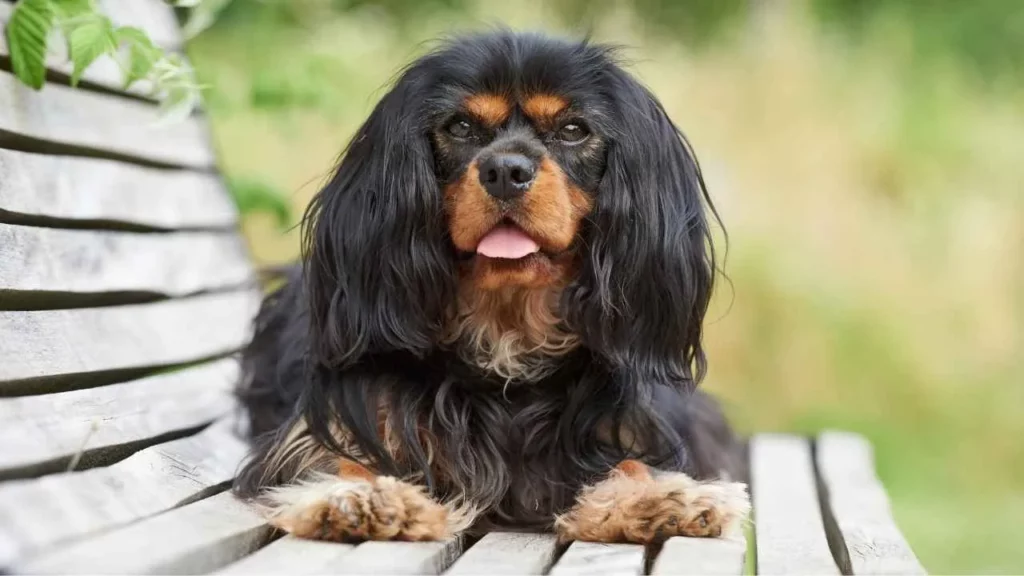
These dogs were bred as lap warmers for nobility, and their small frame and regal look still echo that purpose. You’ll also notice the cavalier’s ears—long, feathery, and expressive, they frame the face in a way that makes the breed instantly recognizable.
Now contrast that with the Cocker Spaniel, a show dog by design and a hunting dog by heritage. The Cocker has a rounder face, shorter snout, and slightly more pronounced domed skull.
Their coats are lush and often longer, sometimes requiring brushing daily routines, especially for show lines. Long hair around the chest and legs gives them a more dramatic silhouette, which is part of what makes them stand out in the ring.
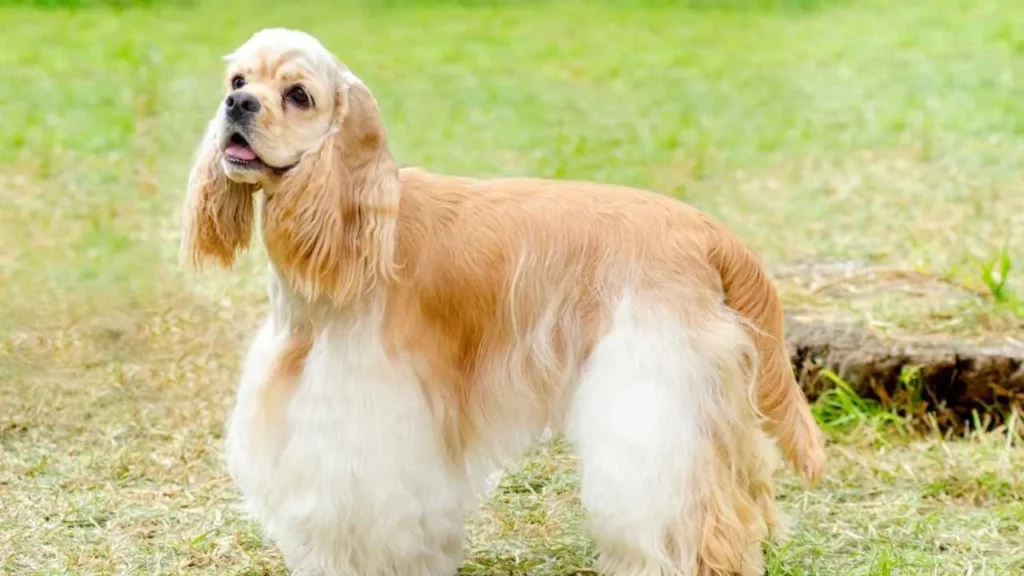
Compared to the Cavalier King, Cockers have a stockier build, thicker feathering, and more variability in coat colors. Their eyes tend to sit deeper in the face, lending them a more serious or focused look, especially when in “work mode.”
Breed Classification: Understanding Their Breeding Groups
Both the Cocker Spaniel and the Cavalier King Charles Spaniel come from the broad spaniel family, but their official breed classification tells us a lot about what they were originally bred to do—and what kind of energy and temperament they bring into a household.
Let’s start with the Cavalier King Charles. Classified by the AKC in the Toy Group, these dogs were developed as royal companion dogs, designed for warmth, affection, and indoor life. Their whole demeanor reflects that background—loving dogs, eager to cuddle, and highly trainable when motivated with positive reinforcement.
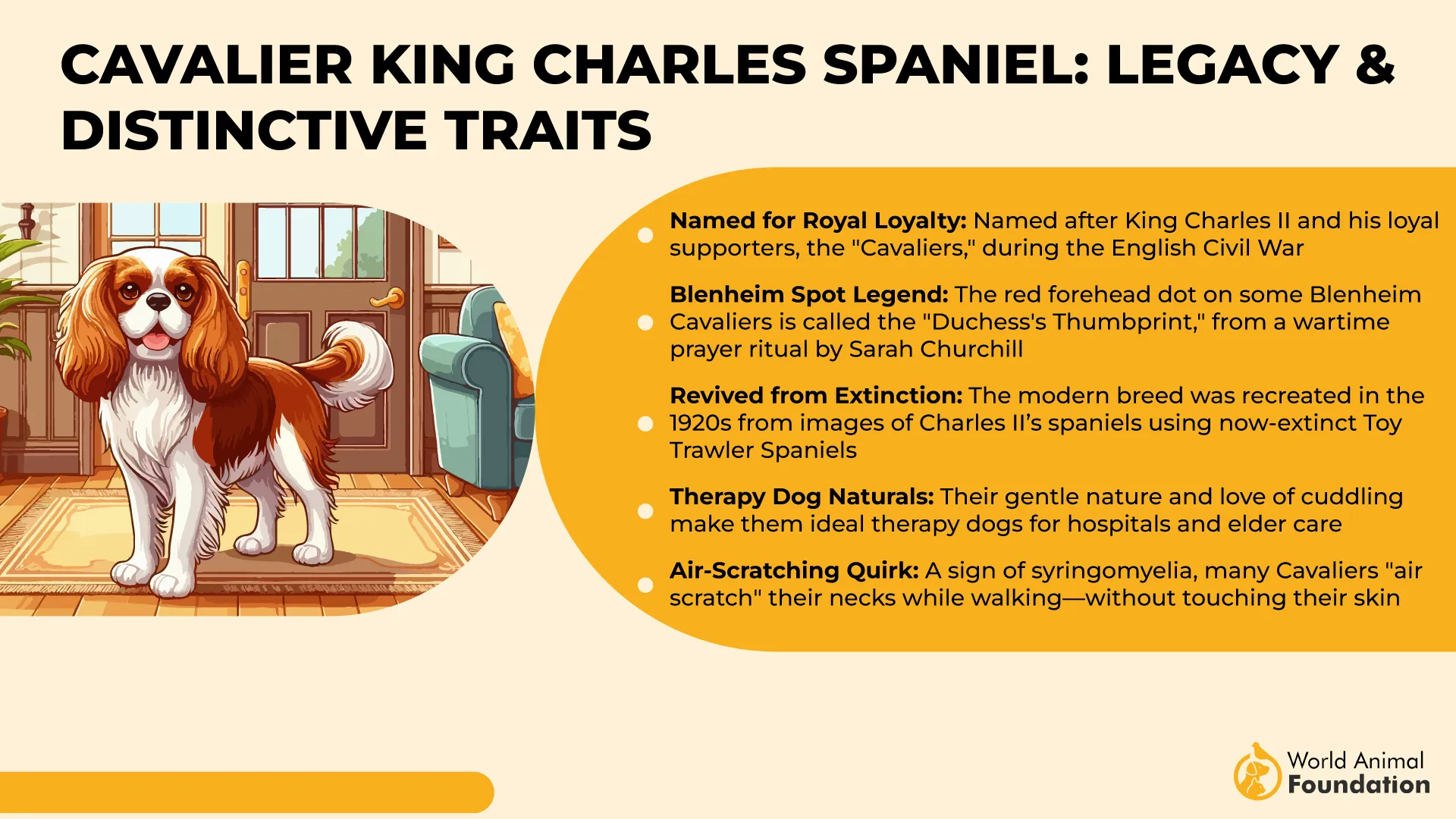
On the other hand, the Cocker Spaniel belongs to the Sporting Group. That places them in the same category as retrievers and pointers—active dogs with a natural drive for the outdoors.
Cocker spaniels were developed for flushing and retrieving birds in the field. Even if they’re lounging on a suburban sofa now, that instinct is still there.
Temperament & Personality Differences
|
Trait |
Cavalier King Charles Spaniel |
Cocker Spaniel |
|---|---|---|
|
Group |
Toy Group (Companion) |
Sporting Group (Hunting) |
|
Energy Level |
Moderate |
High |
|
Sociability |
Very social with all ages & pets |
Social, but may need more training |
|
Trainability |
Highly trainable, eager to please |
Trainable but needs consistency |
|
Ideal for |
Apartment living, calm homes |
Active families, homes with a yard |
|
Alone Time Tolerance |
Low – prefers constant company |
Moderate – needs stimulation |
|
Sensitivity |
Very sensitive |
Slightly more independent |
Health Overview: Common Issues in Both Breeds
When comparing the Cavalier King Charles Spaniel and the Cocker Spaniel, one of the most important things pet parents should consider is each breed’s susceptibility to certain health problems.
Common Health Problems in Cavalier King Charles Spaniels:
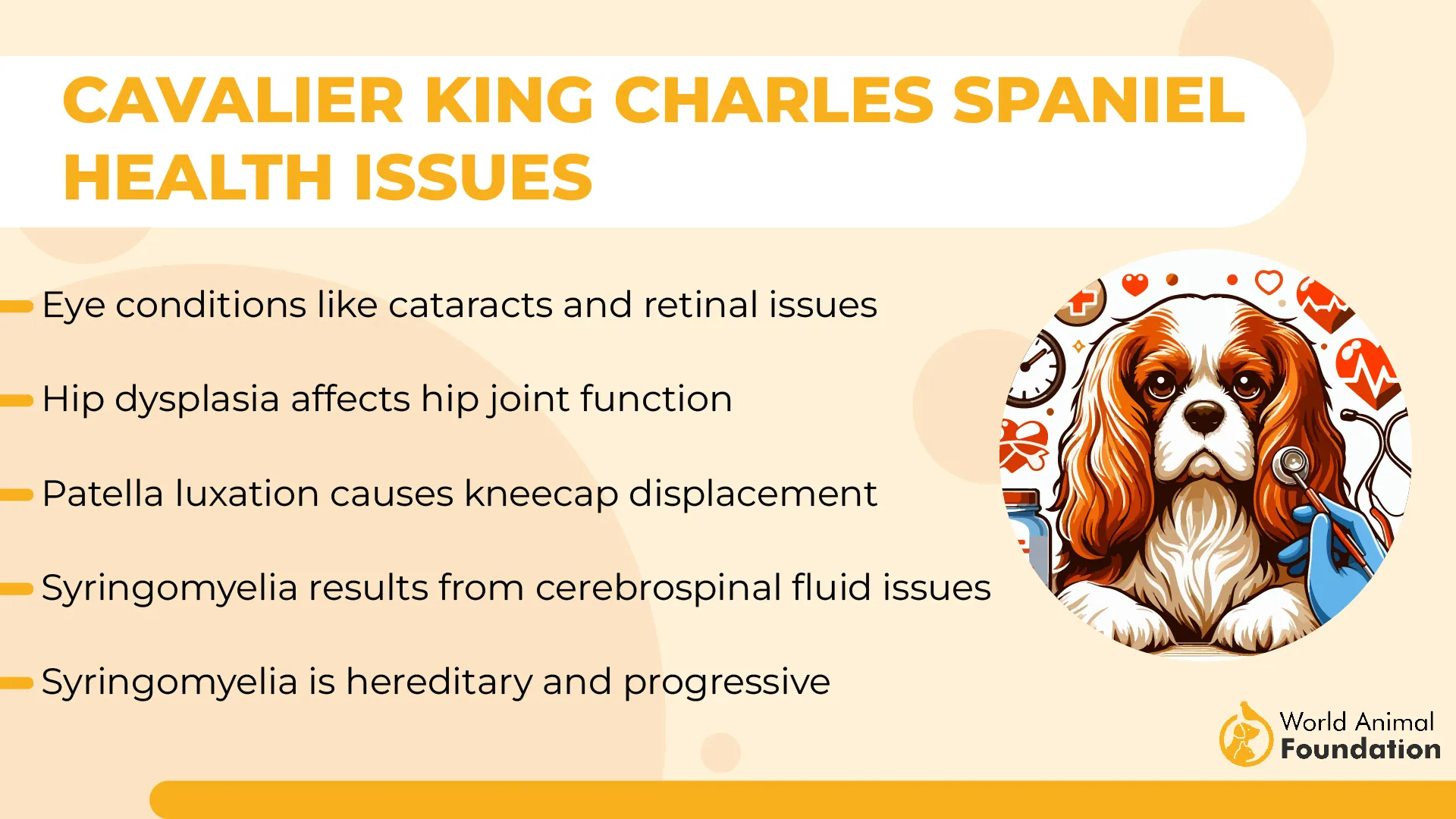
Mitral Valve Disease (MVD): This form of heart disease is extremely common and often starts at a young age, leading to heart murmurs and eventually heart failure if untreated.
Progressive Retinal Atrophy (PRA): A degenerative eye condition that can lead to blindness.
Hip Dysplasia: Improper formation of the hip joint, which may impact mobility in active dogs.
Ear Infections: Cavalier’s ears are long and floppy, which can trap moisture and lead to infections.
Syringomyelia (not in every case, but worth noting): A neurological condition some King Charles spaniels are known to develop.
Common Health Problems in Cocker Spaniels:
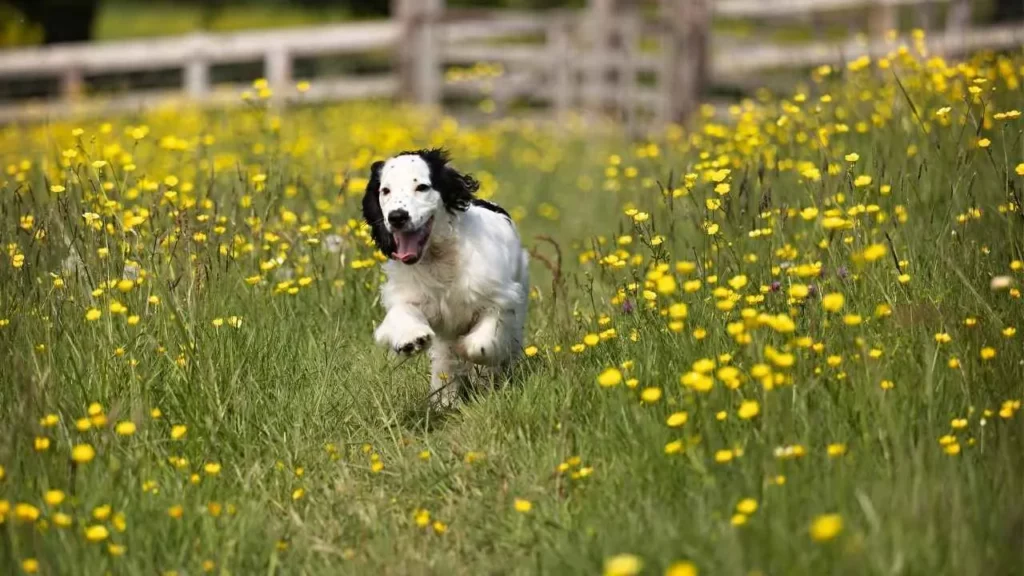
Chronic Ear Infections: Their long, pendulous ears are breeding grounds for bacteria if not kept dry and clean.
Hip Dysplasia: Just like cavaliers, cockers can develop joint issues.
Skin Allergies: Known to be more sensitive, Cocker Spaniels often deal with skin irritations and itchiness.
Progressive Retinal Atrophy (PRA): A shared issue with Cavalier King Charles dogs.
Patellar Luxation: Similar to Cavaliers, knee dislocation is another concern.
Glaucoma and Cataracts: Eye conditions that may require surgery in the senior years.
Lifespan: How Long Do They Typically Live?
When it comes to lifespan, both the Cavalier King Charles Spaniel and the Cocker Spaniel can offer over a decade of loyal companionship, usually between 9 to 15 years, depending on the breed and individual care.
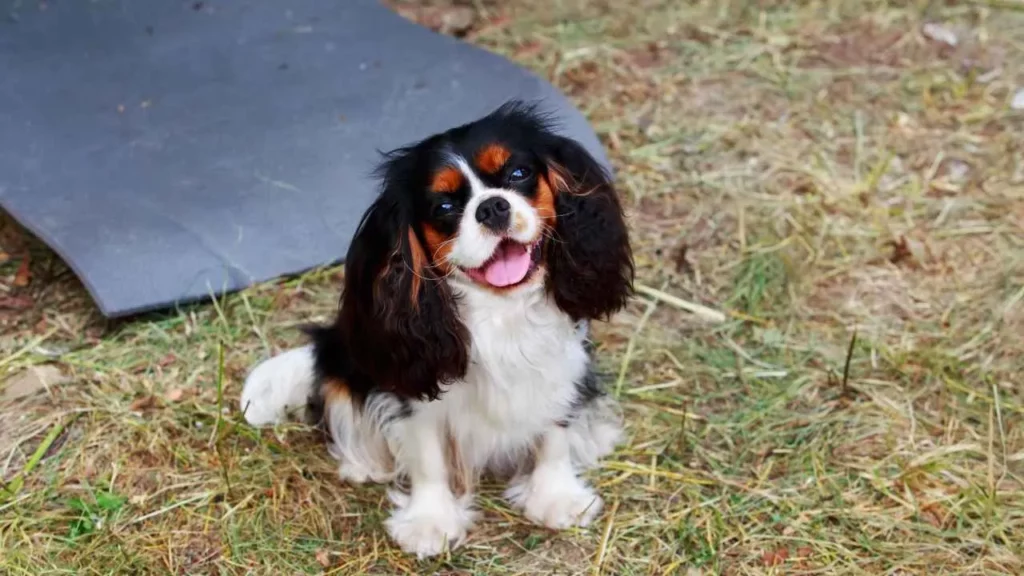
On average, Cocker Spaniels, including both American Cocker and English Cocker, tend to live slightly longer, often reaching 15 years with the right environment and routine. Cavalier King Charles Spaniels, while just as affectionate and people-loving, typically live between 9 to 14 years.
Conclusion
Choosing between a Cavalier King Charles Spaniel and a Cocker Spaniel comes down to your lifestyle and what you’re looking for in a four-legged companion. Both breeds are loyal, affectionate, and great with kids, making them popular among owners who want a dog that fits seamlessly into family life.
If you prefer a laid-back lapdog that thrives on spending time cuddled next to you, the Cavalier might be your match. They’re incredibly social and gentle, with lower exercise needs and a temperament that suits apartment living or quieter households.
On the other hand, if you’re more active and enjoy long walks or play sessions, the Cocker Spaniel—especially the American or English varieties—brings more energy to the table


